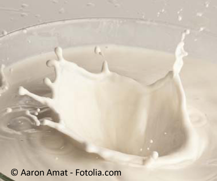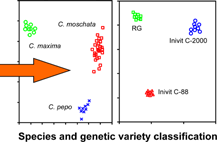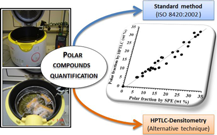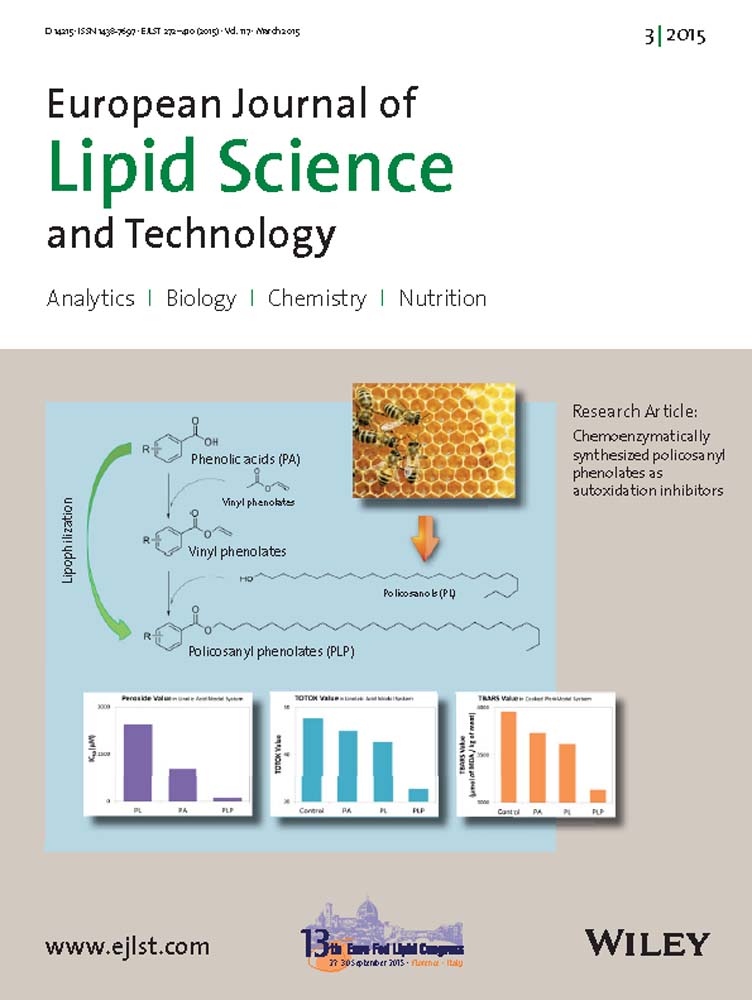In this issue
Dairy fat improves retention of ALA and its conversion to omega-3 LC-PUFA
Alpha-linolenic acid (ALA) is an abundant omega-3 PUFA, but its dietary intake is typically very low and the metabolic conversion to long chain PUFA inefficient. Ezanno, Rioux and colleagues tested in rat the hypothesis that the storage of ALA in the liver and adipose tissue and its biotransformation to LC-PUFA can be enhanced when ALA is consumed in a diet rich in dairy fat, assuming that the increased intake of the rapidly oxidized saturated short- and medium-chain fatty acids in dairy fat could salvage ALA from the β-oxidation pathway. In addition, the presence of myristic acid, a known activator of Δ6-desaturase, could lead to the improvement of ALA conversion to omega-3 LC-PUFA. Indeed it is shown that substituting olive oil for butterfat improves the tissue retrieval of ALA and that dairy fat also improves its conversion to the highly unsaturated omega-3s EPA, DPA and DHA in the liver.
Ezanno et al. Beneficial impact of a mix of dairy fat with rapeseed oil on n-6 and n-3 PUFA metabolism in the rat: A small enrichment in dietary alpha-linolenic acid greatly increases its conversion to DHA in the liver. Eur. J. Lipid Sci. Technol. 2015, 117, 281–290.

Classification of pumpkin oils by DIMS
Pumpkin seed oils are expensive specialty oils and therefore authentication methods capable of establishing the origin and other quality parameters of pumpkin seed oils are required. Lerma-García, Simó-Alfonso and colleagues present a new methodology for classification of pumpkin seed oils according to their species and genetic variety. The analytical method is quick and simple and is based on the use of direct infusion mass spectrometry, with no chromatography step required. The profiles obtained with the new method were compared with GC-FID results, and were further used to construct linear discriminant analysis models to classify the oils by species and variety. The described DIMS method is a promising alternative for fatty acid fingerprinting of pumpkin oils.
Lerma-García et al. Statistical classification of pumpkin seed oils by direct infusion mass spectrometry: Correlation with GC-FID profiles. Eur. J. Lipid Sci. Technol. 2015, 117, 331–337.

Rapid quantification of polar compounds in frying oils
Polar compounds are a good indicator of frying oil quality and their maximum acceptable concentrations are subject to international regulations. While the ISO method for the determination of polar compounds is simple and accurate, it is time-consuming and consumes considerable amounts of materials including silica gels and solvents. Correia, Lecomte and colleagues report an alternative method for the determination of polar compounds in thermo-oxidized oils using HPTLC-densitometry. The method was tested using soybean, sunflower and peanut oils. The method is fast, economical and environmentally friendly and appears to be suitable for rapid and accurate screening of oils when the non-heated starting oils are available for reference.
Correira et al., Rapid quantification of polar compounds in thermo-oxidized oils by HPTLC-densitometry. Eur. J. Lipid Sci. Technol. 2015, 117, 311–319.





